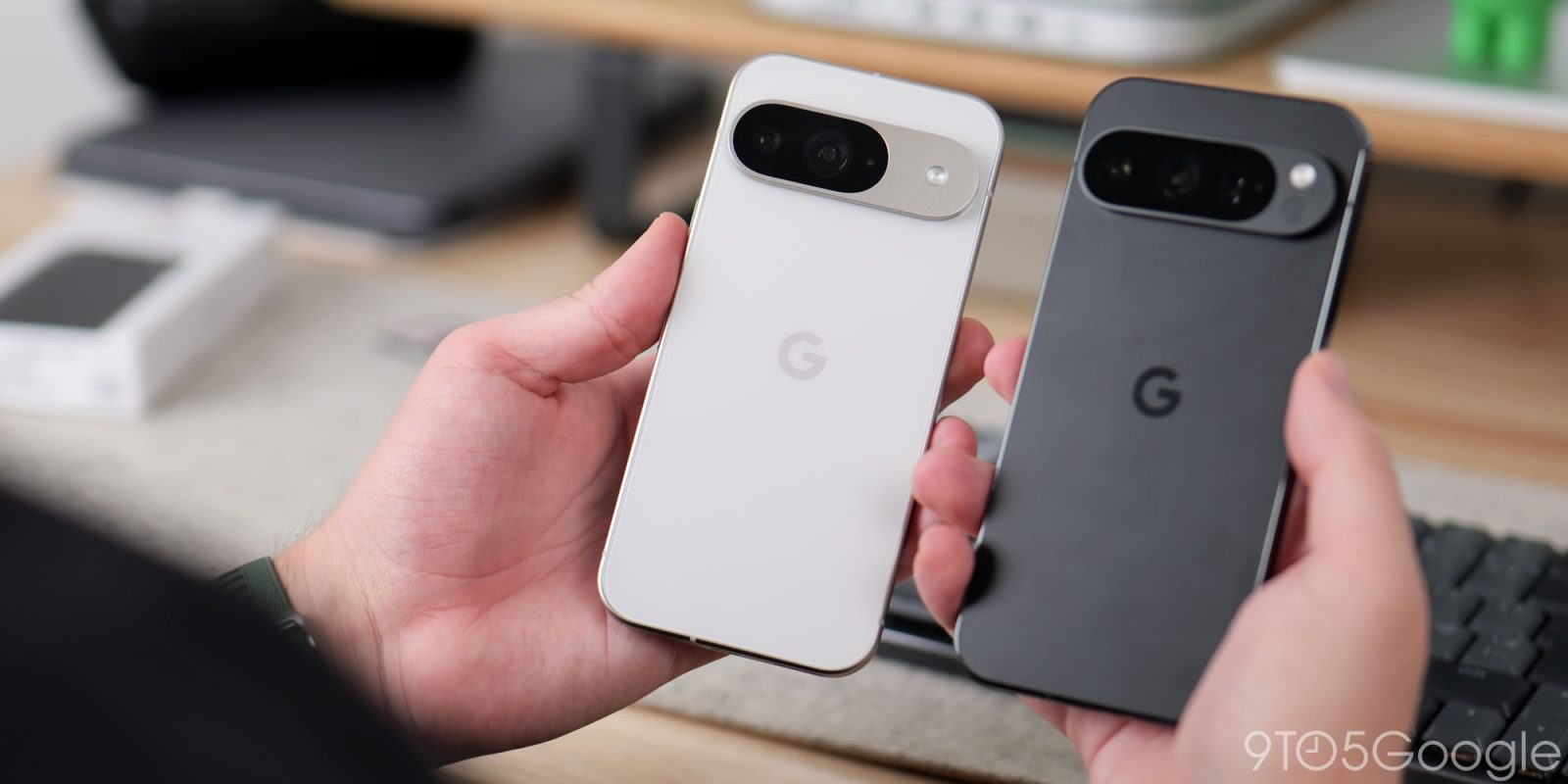
There is a divergence in the Made by Google smartphone series. We have two small phones that are identical in size and shape but offer different power outputs. Here’s how the Pixel 9 compares to the Pixel 9 Pro.
Before you’ve even seen the tale of the tape, the $100 bump across the board is tough to swallow. The Pixel 10 has also been swirling around with people saying they are hoping to see some even bigger improvements with the SoC switch from Samsung Foundry to TSMC. If you’re one of those people, skip the Pixel 9 series wholesale.
Even with that sentiment, Google’s smartphones have almost always been more than just a sum of their parts; the Pixel 9 is no different. If you have even a passing interest, is the extra cost worth it? Here’s what you need to know.
Hardware
While there are differences, the Pixel 9 and 9 Pro have the exact same footprint. They are the same size, shape, width, and height and are only 1g apart. They both pack in 6.3-inch “Super Actua” OLED screens, use the same processor, have the same battery, and have very similar core internals.
Delve in a little deeper, and you will see why one is tagged “Pro.” The Pixel 9 Pro has a brighter, higher-resolution display, 4GB more RAM, and two extra storage variants. The LTPO display on the 9 Pro can also reduce the refresh rate to as low as 1Hz to help save battery, but it even has smaller uniform bezels that are noticeable when viewed front-on. Google has done great by making the bezels the same width on all sides for a uniform look.


While the internals are almost identical, the extra RAM overhead means that the Pixel 9 could be a little slower at certain memory-intensive tasks than the Pixel 9 Pro. We haven’t noticed anything where the difference is pronounced, but AI tasks will have an edge on the 9 Pro now and into the future. The ultrasonic in-display fingerprint scanner is faster, easier, and more reliable than the optical scanner on the Pixel 7 and Pixel 8.
| Google Pixel 9 | Google Pixel 9 Pro | |
|---|---|---|
| Size | 6.3-inches | 6.3-inches |
| Dimensions | 152.4 x 71.1 x 7.6 mm (6.0 x 2.8 x 0.3 in) | 152.4 x 71.1 x 7.6 mm (6.0 x 2.8 x 0.3 in) |
| Display | 1080 x 2424 pixels / 120Hz, Actua OLED / Gorilla Glass Victus 2 / 418 ppi / 2,050 nits | 1280 x 2856 pixels/ 120Hz / Super Actua LTPO OLED / Gorilla Glass Victus 2 / 489 ppi / 3,000 nits |
| Chipset | Google Tensor G4 | Google Tensor G4 |
| RAM | 12GB | 16GB |
| Storage | 128 / 256GB | 128 / 256 / 512GB / 1 TB |
| Battery | 4,700mAh | 4,700mAh |
| Rear Camera | 50MP wide / 48MP ultrawide | 50MP wide / 48MP ultrawide / 48MP telephoto |
| Front-facing Camera | 10.5MP | 42MP |
| Biometrics | Fingerprint Unlock, Face Unlock | Fingerprint Unlock, Face Unlock |
| Colors | Obsidian / Porcelain / Wintergreen / Peony | Obsidian / Porcelain / Hazel / Rose Quartz |
| Weight | 198g | 199g |
| IP Rating | IP68 | IP68 |
One area where the Pixel 9 has the edge is in the color variants available. There is no parity in the brighter hues used on the cheaper handset, with the Peony offering a flashy, vibrant colorway to stand out from the crowd. The Pixel 9 Pro lineup is more muted and toned down, but the matte glass finish could be more appealing – if you can stomach glossy side rails.
As noted above, only 1g gram separates the duo at 198g and 199g, respectively. IP68 water and dust resistance ratings are present, too, so taking a dip shouldn’t pose any risk.
Software
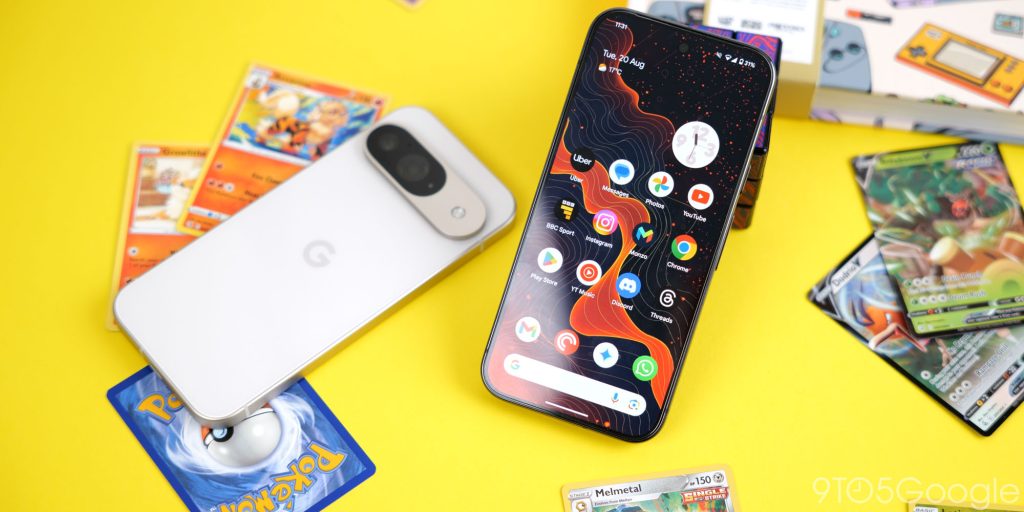

You are getting practically identical software on the Google Pixel 9 and 9 Pro – save some camera functions we’ll talk about shortly. The Google AI suite is fully catered for with any Pixel 9 device this year. This includes Pixel Studio for creating and editing your favorite images using Imagen2. Pixel Screenshots intelligently analyzes any on-device screenshots to help give context and pull key information where required.
One of the most disappointing aspects of the entire Pixel 9 series is the lack of Android 15. These phones have shipped with Android 14 pre-installed. Google confirmed 7 years of updates are coming, but it’s not clear if Android 15 is going to be classed as a “free” OS upgrade, but the official support pages state that August 2031 is when the lineup will be classed as “obsolete.”
| Google Pixel 9 | Google Pixel 9 Pro | |
|---|---|---|
| Software | Shipped with Android 14 | Shipped with Android 14 |
| Features | In-display fingerprint scanner Face Unlock Google One VPN Titan M2 chip Gemini Nano AI wallpapers Circle to Search Add Me Pixel Studio Pixel Screenshots Satellite SOS (US only) | In-display fingerprint scanner Face Unlock Google One VPN Titan M2 chip Gemini Nano AI wallpapers Circle to Search Add Me Pixel Studio Pixel Screenshots Satellite SOS (US only) |
Even with last year’s update, the Pixel 9 series comes with a number of exclusive features like Pixel Screenshots for organizing your on-device images, Pixel Studio which lets you create images using AI prompts, or even Reimagine. This goes beyond the Magic Editor function with prompts letting you make changes or add content to your on-device images. Sadly, the Satellite SOS function is limited to the US for now. It lets you send SMS messages to emergency services when off-grid.
The day-to-day experience is identical on this duo and, for what it’s worth, very similar to the Pixel 8 series.
Battery
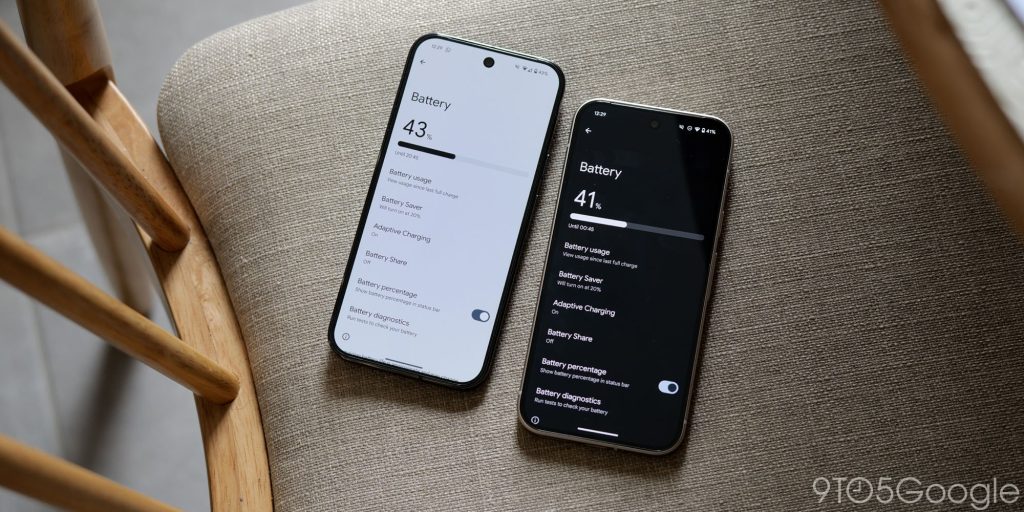
As with many elements of this comparison, the Pixel 9 and 9 Pro share the same battery capacities at 4,700mAh. This is a decent cell size for a 6.3-inch phone. In our experience, you’ll have enough overhead to handle a lot each and every day.
| Google Pixel 9 | Google Pixel 9 Pro | |
|---|---|---|
| Battery Size | 4700 mAh | 4700 mAh |
| Charging Speed | 30W wired (27W actual) 21W Qi wireless | 30W wired (27W actual) 23W Qi wireless |
The only difference is the charging speeds. Google claims 30W charging, but the reality this capped at lower charging rates closer to 27W when wired. You can get up to 70% in just 30 minutes with the Pixel 9 Pro or 55% on the Pixel 9 when using a USB-C cable. The wireless charging speeds with the second-generation Pixel Stand are also slightly different and lower than the specified 30W.
Camera
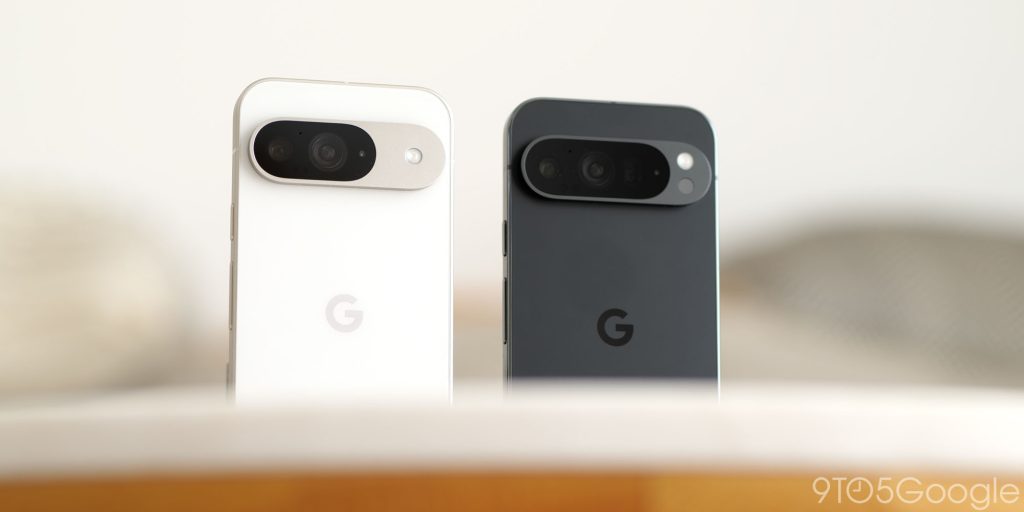
The big difference between the Pixel 9 and 9 Pro cameras is the addition of one all-important extra lens and a big upgrade on the selfie camera. If you want up to 30x zoom, then there is only one device to pick.
Aside from this lens, there is parity with the rear camera quality because the Pixel 9 has upgraded to a 48MP ultrawide angle lens. You can zoom in at 8x using the main lens, too, which produces acceptable stills and video.
| Google Pixel 9 | Google Pixel 9 Pro | |
|---|---|---|
| Main Sensor | 50MP f1.7 | 50MP f1.7 |
| Secondary Sensor | 48 MP ultra-wide-angle f2.2 125.8˚ FOV | 48MP ultra-wide-angle f2.2 125.8˚ FOV |
| Tertiary sensor | ❌ | 48MP 5x telephoto f3.5 |
| Front-facing Sensor | 10.5 MP, f/2.2 | 42 MP, f/2.2 |
| Camera hardware features | OIS, EIS, PDAF | OIS, EIS, PDAF |
| Camera Software Features | Super Res Zoom up to 8x Guided Frame 4K UHD 60fps 4K UHD 30fps (selfie) 10-bit HDR10 Video Real Tone Magic Editor Best Take Magic Eraser Photo Unblur Audio Magic Eraser | Super Res Zoom up to 30x Guided Frame 8K at 30fps (Video Boost) 4K UHD 60fps (all lenses) 10-bit HDR10 Video Super Res Zoom Video up to 20x Real Tone Magic Editor Best Take Magic Eraser Photo Unblur Audio Magic Eraser Zoom Enhance |
caIt’s not just the hardware differences. The Pixel 9 Pro has more camera functions, including a dedicated Pro mode for photos, 8K 30fps video with the help of Video Boost, Super Res Zoom Video at up to 20x, and Zoom Enhance via the Google Photos application. Add Me is available on both phones and, in practice, is excellent.
The Pixel 9 also has a much lower resolution 10.5MP selfie camera than the 9 Pro’s 42MP selfie shooter. You can see the difference side-by-side, but if you’re not much of a selfie taker, then this won’t matter. Face Unlock works just as it always has – fast and reliable.
If you choose the base model this year, you will miss out on Google’s cutting-edge camera functionality, so we’d say you should choose wisely.
Pixel 9 vs. 9 Pro: Which should I choose?
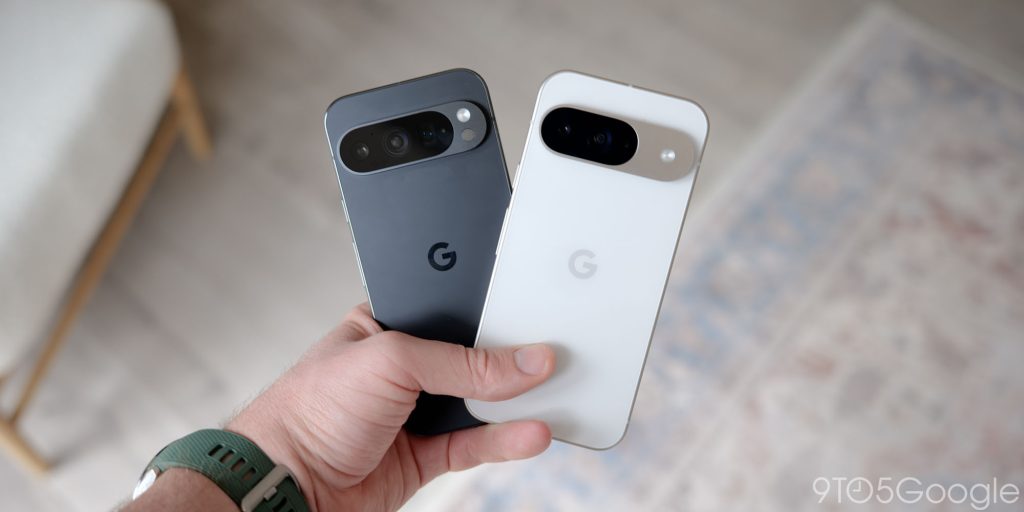
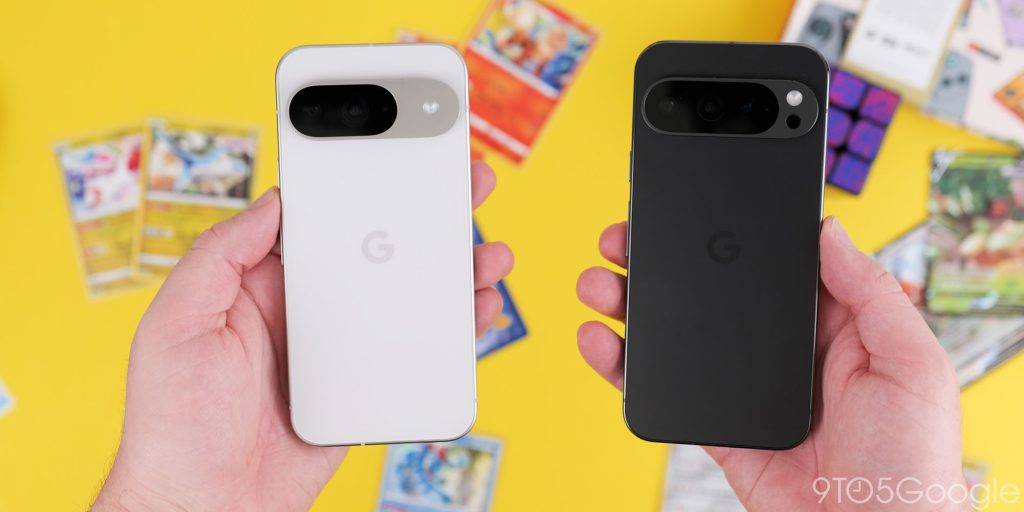
About upgrading: 9to5Google often gives specific product recommendations. Sometimes, we may suggest not upgrading, due to various reasons including, but not limited to: increased device cost, negligible performance gains, or environmental impact. Whether to upgrade is always your call, but our aim is to help you make as informed a decision as possible.
Google’s decision to make the Pixel 9 and 9 Pro the exact same size and shape is both a blessing and a curse because while the regular Pixel 9 is a great entry into the lineup this year, you’re so close to getting the full package with a little bit of extra cash. It has a great display and a solid dual-camera system. Although it is a little more expensive than its predecessors, it has some notable upgrades.
There are tons of reasons to pick the Pixel 9 Pro over the Pixel 9, but it boils down to the telephoto zoom lens and enhanced feature set that this adds. If you want the best of the Pixel in a smaller package, this is the obvious choice. For an extra $200, you do not miss out on any of the good stuff—the key-selling criteria. It’s a no-brainer because, for the first time, you can have your cake and eat it.
Get the Pixel 9
Get the Pixel 9 Pro
FTC: We use income earning auto affiliate links. More.




Comments